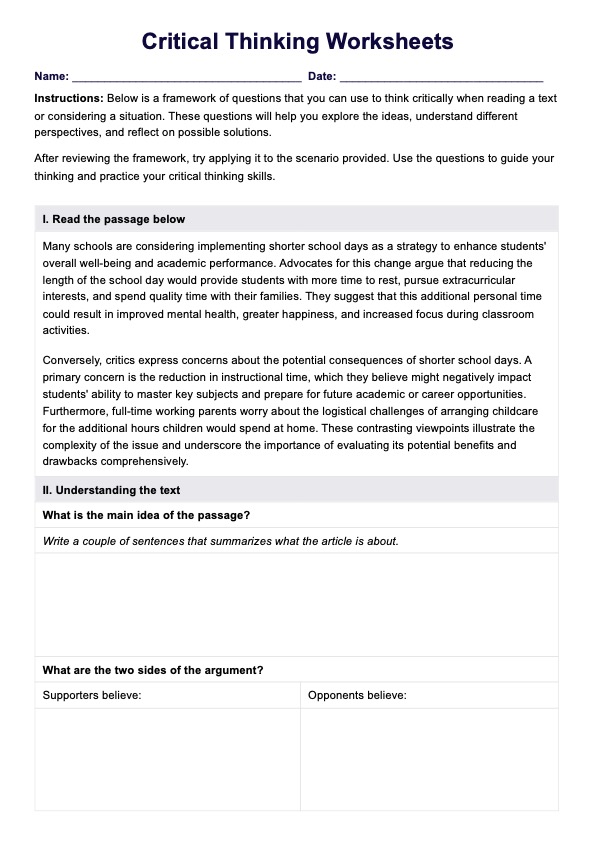The Critical Thinking Worksheet is designed to help students determine how to practice and develop critical thinking skills. This vital skill is cultivated through guided questions, encouraging users to delve deeper into topics, analyze statements, and evaluate different perspectives.

Critical Thinking Worksheets
Unlock the power of critical thinking with our expertly crafted Critical Thinking Worksheets, designed to foster analytical skills and logical reasoning in students.
Critical Thinking Worksheets Template
Commonly asked questions
The worksheet provides a structured approach to analyzing issues, with an example passage detailing a debate on shorter school days. It guides students through logical steps to identify patterns, evaluate arguments, and consider solutions. It details a step-by-step framework that students can apply to other situations.
This worksheet is suitable for students of all grades, from first grade to high school, and for instructors aiming to enhance lessons in subjects like math, science, or language arts. The sample pages can be adapted to fit specific knowledge levels, helping young kids build foundational skills and older students refine advanced thinking abilities.
EHR and practice management software
Get started for free
*No credit card required
Free
$0/usd
Unlimited clients
Telehealth
1GB of storage
Client portal text
Automated billing and online payments











